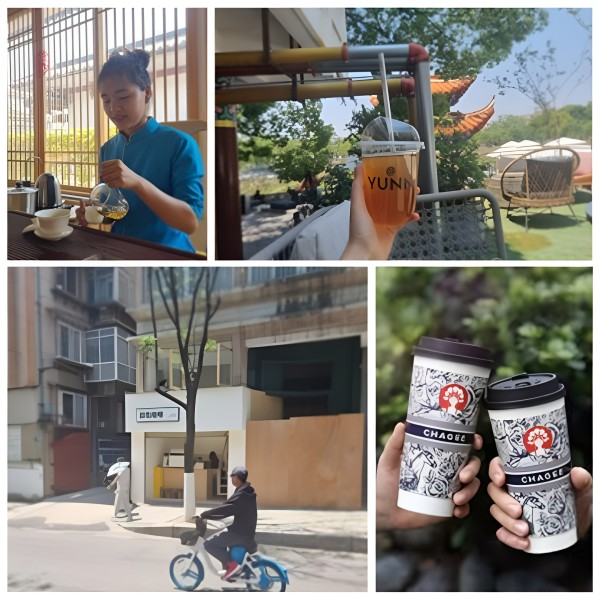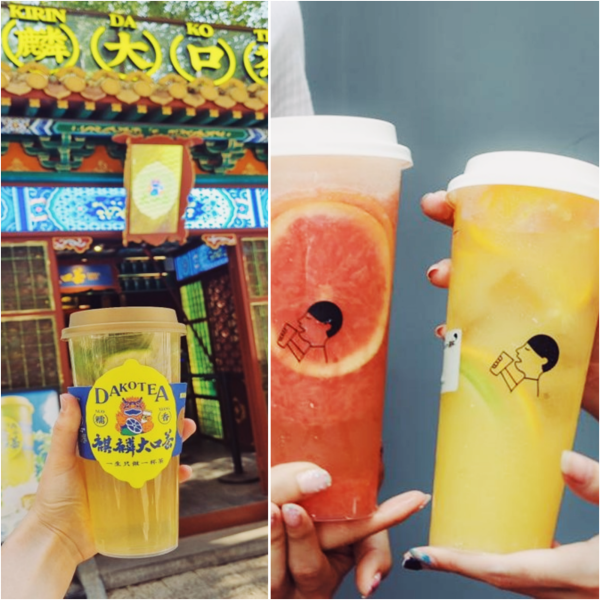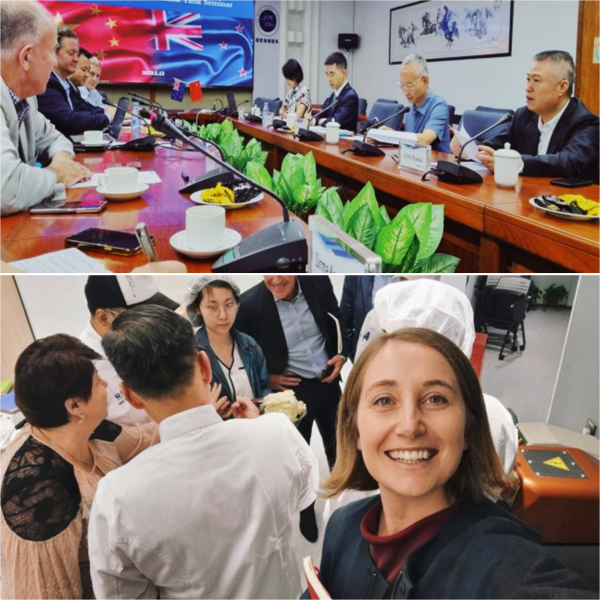During my recent travels in China, including being part of a New Zealand China Council visit to Shanghai, Beijing, and Shenzhen, I discovered a fascinating evolution in branding, national pride, and customer understanding, all centred around tea.
Tea, Guo Chao, and the power of the Western Provinces
Three years ago, you’d be hard pressed to find someone under the age of thirty in a Chinese tea house. Tea was not cool, tea was not hip, and tea, according to my Chinese friends, was something for “old people with lots of free time.” Flash forwards to my most recent trip, and there are a growing number of cafe-come-tea houses clearly aimed at the younger generation.

From top left: A young woman running a modern Chinese tea house; funky cafes on the streets of Kunming and experiencing the local flavours of a Kunming cafe-tea house. And CHANGEE Guo Chao designed cups. Photos: Cleo Gilmour.
Bubble tea, boba, or milk tea have played a significant role in celebrating Chinese identity and promoting local origins.
Hey Tea, a homegrown brand, revolutionised the scene in Shanghai in 2018 to 2019 with its thicker, full-flavoured, foam-topped teas, complete with lines that snaked through malls and down streets.
While Hey Tea once symbolised China's thriving brand landscape, a recent stroll through downtown Kunming revealed a shift. T
The spotlight now shines on Guo Chao (means "National Wave") and hyper-localised tea chains like Chagee and Da Kou Cha. These brands demonstrate the evolution of tea culture, breaking away from extensive menus to focus on unique offerings.
DA KOU CHA takes pride in offering only a single beverage: sticky rice-scented tea with lemon, freshly cut, and shaken before your eyes. Inside what looks more like a psychedelic temple than the lab-like minimalist look of Hey Tea.
The success of these localised chains sends a powerful message to Western brands: capturing the hearts and palates of Chinese consumers doesn't always require a Shanghai address.

From left: Psychedelic tea temple and it's one offering - sticky rice lemon tea. Hey Tea's minimalist branding. Photos: Cleo Gilmour.
Yes, there is Coffee Too
For those wanting a little more kick (including most participants of the China Council Delgation) there was plenty of coffee to go around. While our Chinese counterparts sipped tea, we were served coffee during our meetings with government think tanks, universities, and businesses.
This according to Council Chair and two-time Ambassador to China John McKinnon was a definite new development.
Our coffee experiences ranged from Starbucks, who in 2019 claimed to be opening a store in China every 15 hours, to Luckin, the homegrown "China Starbucks" who made international headlines in a scandal involving fabricated sales and accounting fraud.
My personal favorite however was the barista-made coffee served at BYD, an electric vehicle manufacturer, complete with the New Zealand China Council logo on top.

Top: New Zealand-China Council meets with Shenzhen Think Tank - note who drinks tea and who drinks coffee. Bottom: Inside Fonterra's Shanghai test kitchen developing localised products for food service clients. Photos: Cleo Gilmour.
BYD’s attention to detail showcases Chinese brands’ ability to cater to the rise in demand for personalisation but also reflects China's decades of learning and adapting to Western customs. This has me wondering if New Zealand can reciprocate the same understanding.
The generational differences I’ve witnessed in China are about as vast as the difference between an avocado grape macchiato (the real thing) and a traditional Long Jing green tea.
These evolving cultural textures are important for us to grasp if we are going to engage with China with the respect and understanding we take for granted.
Perhaps a simple cup of tea can be the starting point, allowing us to connect with China's rich culture, and engage in meaningful dialogue.
Banner image: The Council in front of BYD’s wall of patents, before enjoying coffee with the Council’s logo patterned on top. Photo: Cleo Gilmour.
-Asia Media Centre


